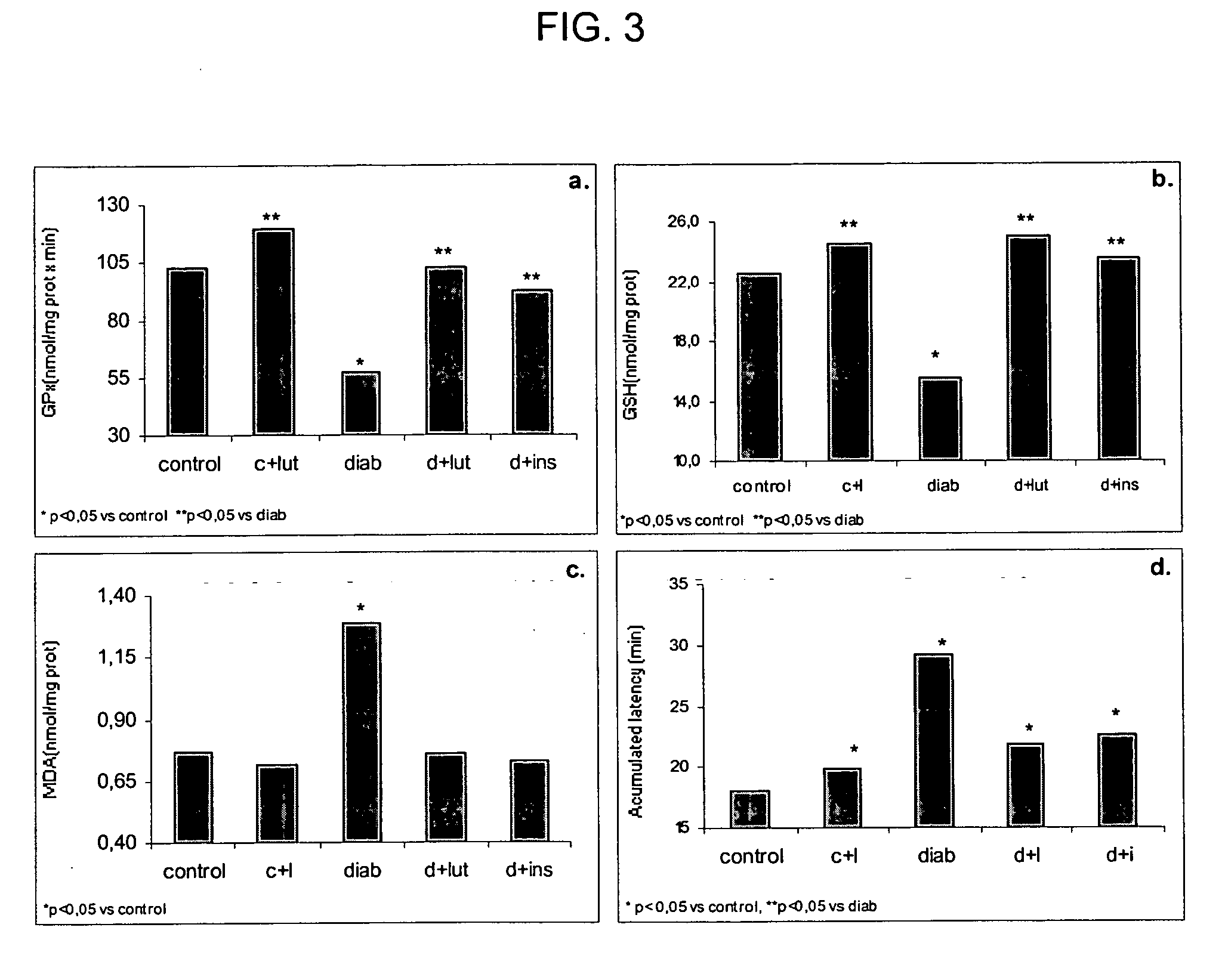Method of using carotenoids in the prevention of cognitive decline and for other neuroprotection functions
a carotenoids and cognitive decline technology, applied in the field of carotenoids, can solve the problems of diabetes mellitus, diabetes patients, and long-term consideration of diabetes mellitus as a risk factor for the development of vascular dementia
- Summary
- Abstract
- Description
- Claims
- Application Information
AI Technical Summary
Benefits of technology
Problems solved by technology
Method used
Image
Examples
Embodiment Construction
Materials and Methods
[0018] Experimental Design
[0019] Male albino mice were used throughout the study, housed in a environmentally regulated room on a dark-light cycle of 12 hours with free access to food and water. Principles of laboratory animal care (NIH publication no. 85-23, revised 1985) were followed, as well as specific Spanish regulations. Animals were made diabetic with a single subcutaneous injection of 200 mg alloxan / kg body weight (66 mg / ml) in 0.1 M citrate buffer, pH 4.5, at day 0 of the experiment. Control mice were injected with the same volume of vehicle also at day 0 of the experiment.
[0020] Mice were identified as diabetic on the basis of blood glucose levels (higher than 16 mM at least 4 days after alloxan treatment). Animals were divided into subgroups as required by the experiment (control, control+lutein, diabetic, diabetic+lutein, diabetic+insulin, diabetic+insulin+lutein). Lutein was administered daily at a dose of 0.2 mg / kg p.o since day 4 after alloxa...
PUM
| Property | Measurement | Unit |
|---|---|---|
| pH | aaaaa | aaaaa |
| body weight | aaaaa | aaaaa |
| pH | aaaaa | aaaaa |
Abstract
Description
Claims
Application Information
 Login to View More
Login to View More - R&D
- Intellectual Property
- Life Sciences
- Materials
- Tech Scout
- Unparalleled Data Quality
- Higher Quality Content
- 60% Fewer Hallucinations
Browse by: Latest US Patents, China's latest patents, Technical Efficacy Thesaurus, Application Domain, Technology Topic, Popular Technical Reports.
© 2025 PatSnap. All rights reserved.Legal|Privacy policy|Modern Slavery Act Transparency Statement|Sitemap|About US| Contact US: help@patsnap.com



